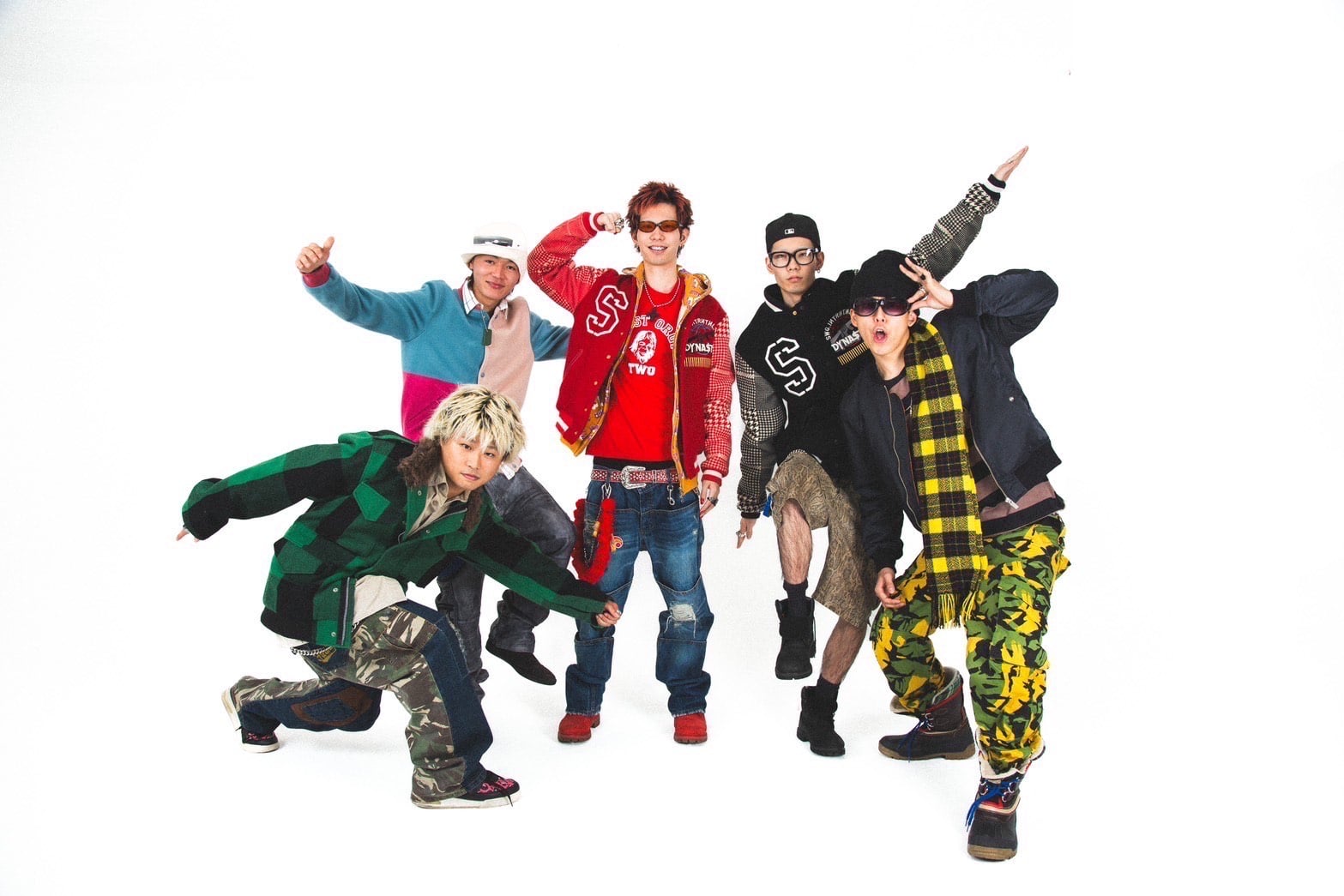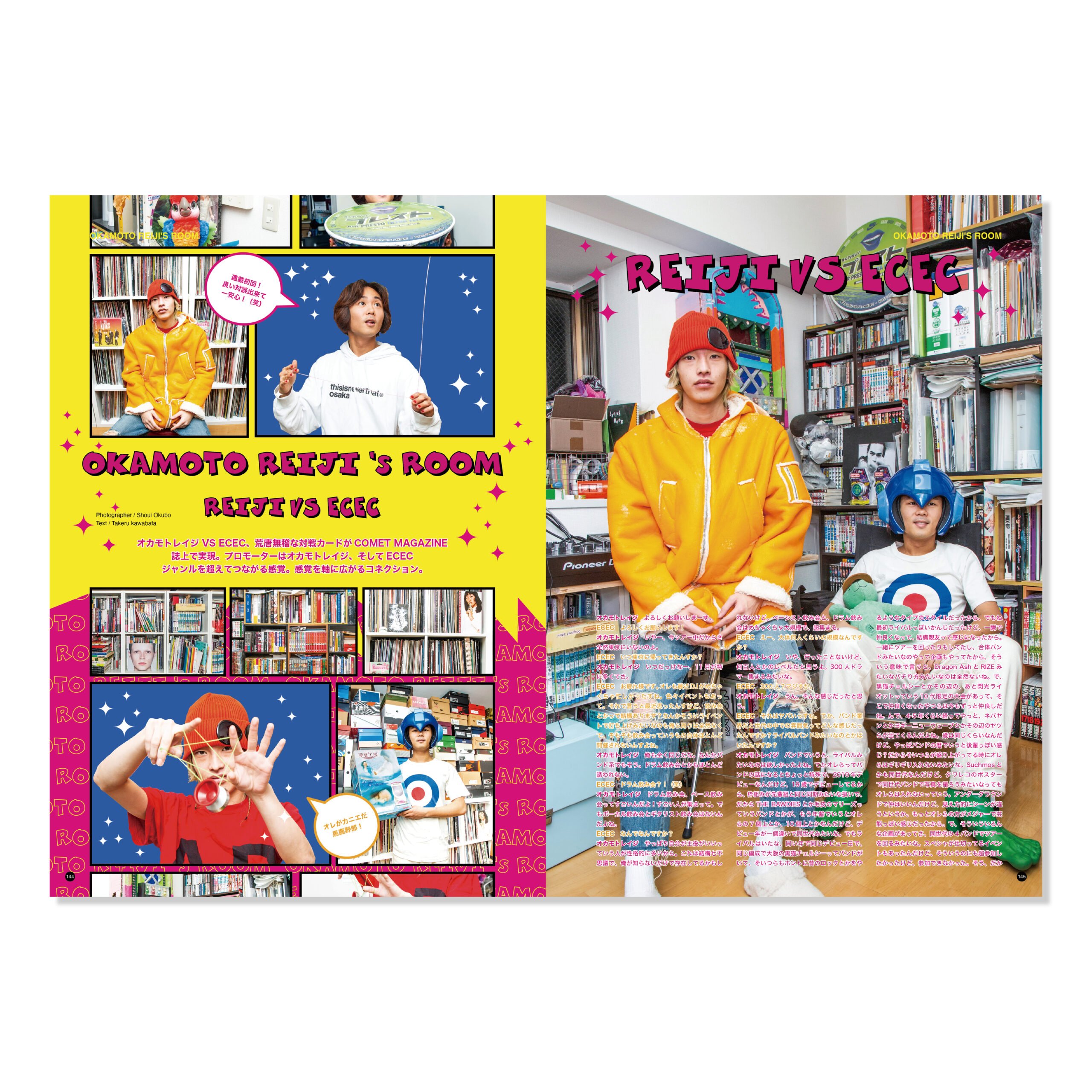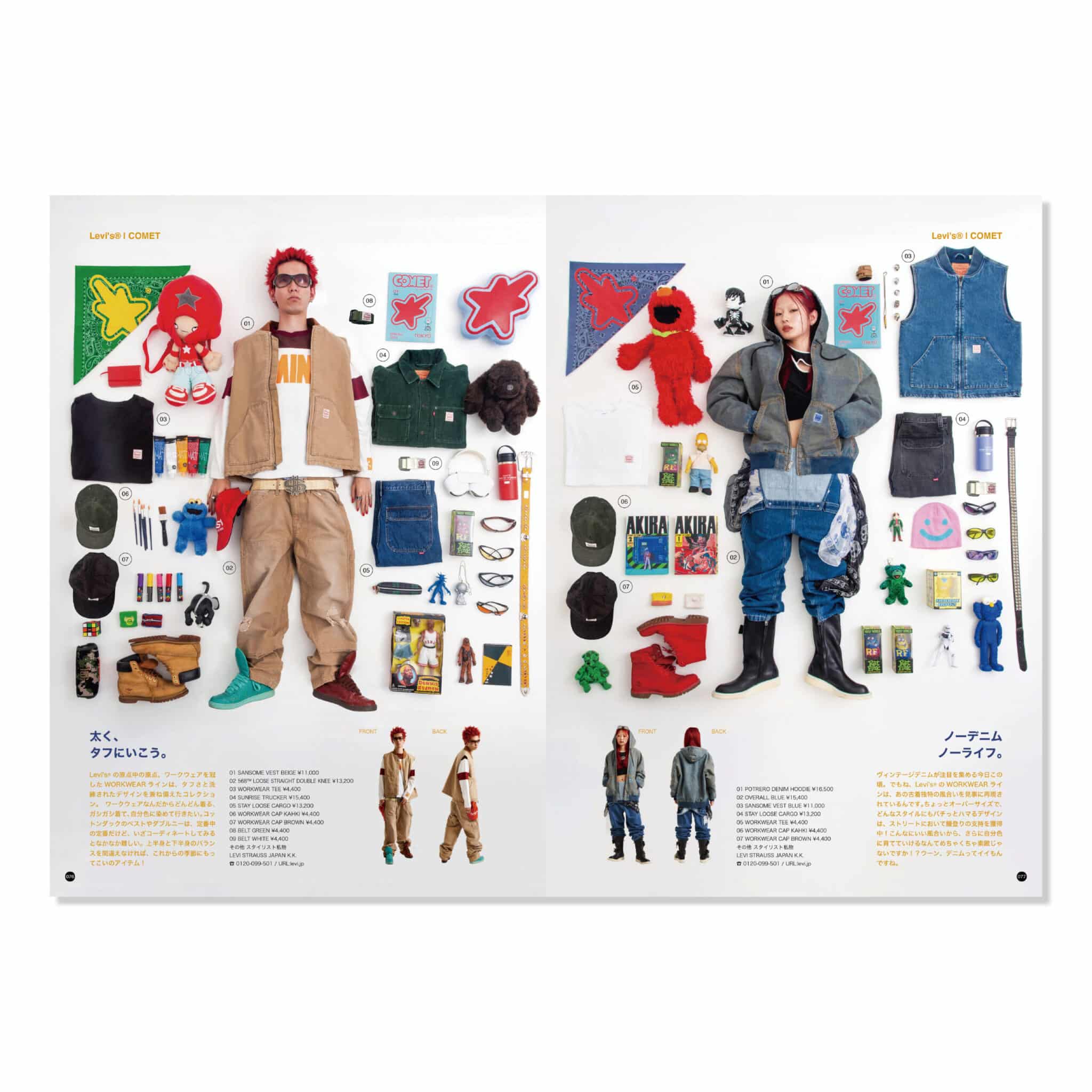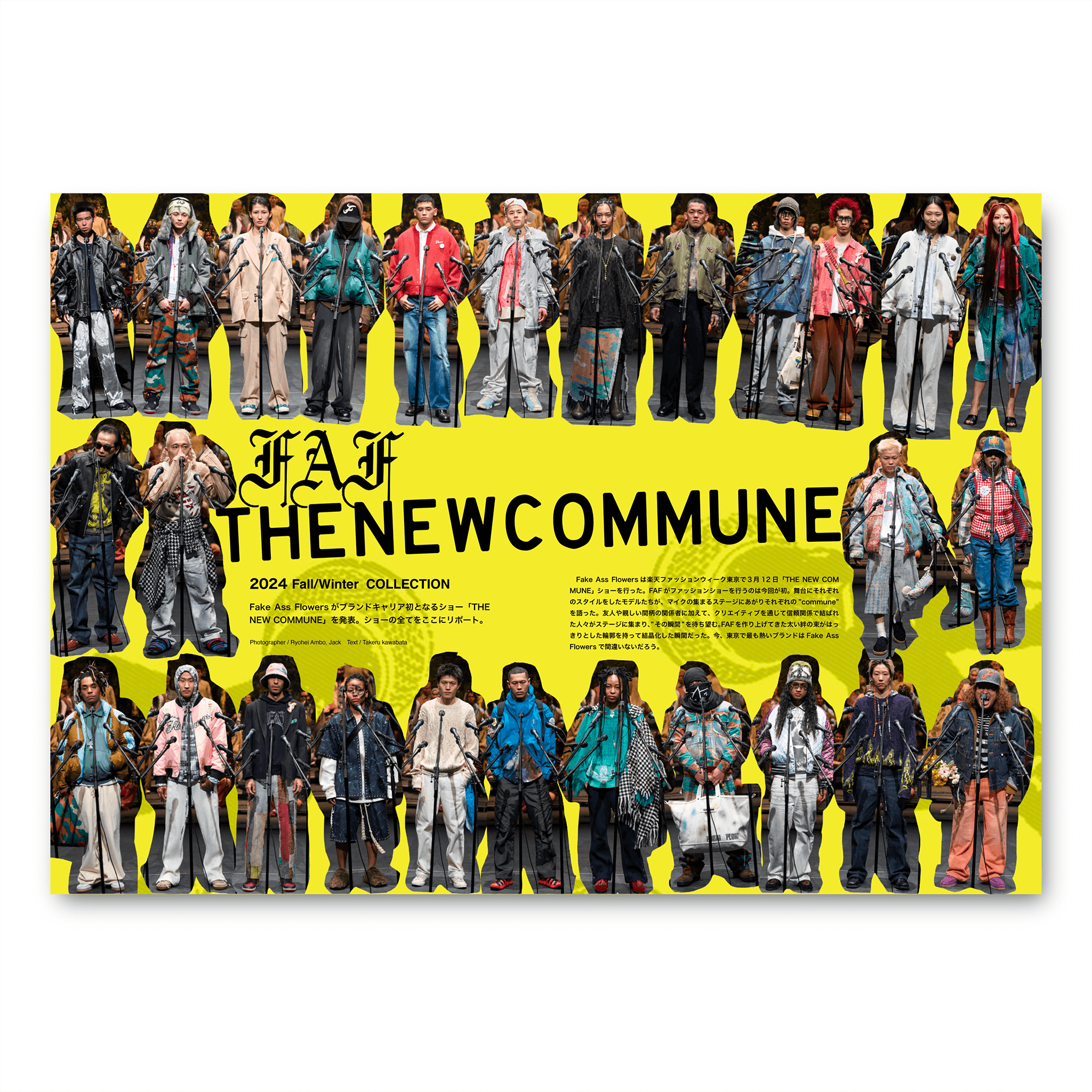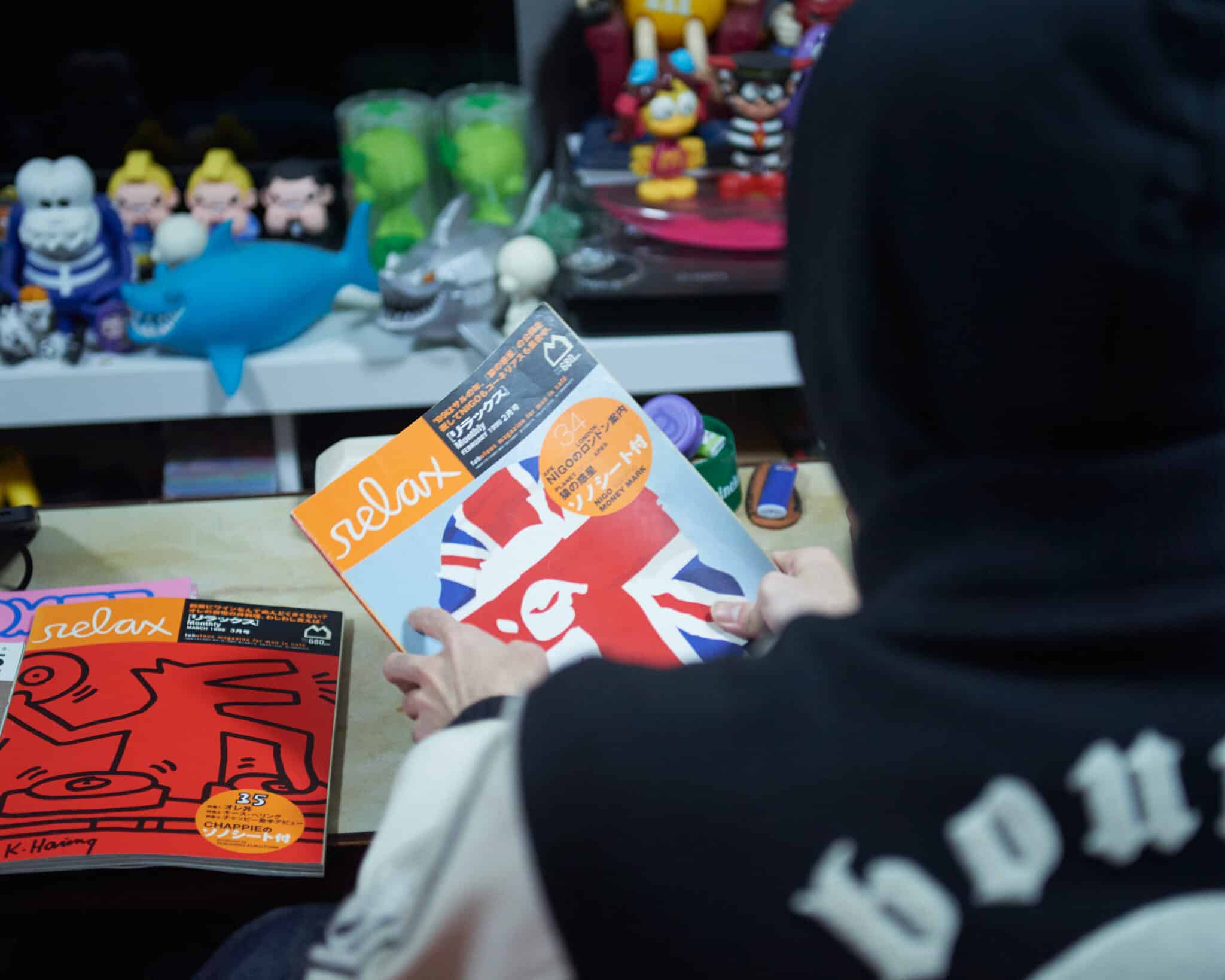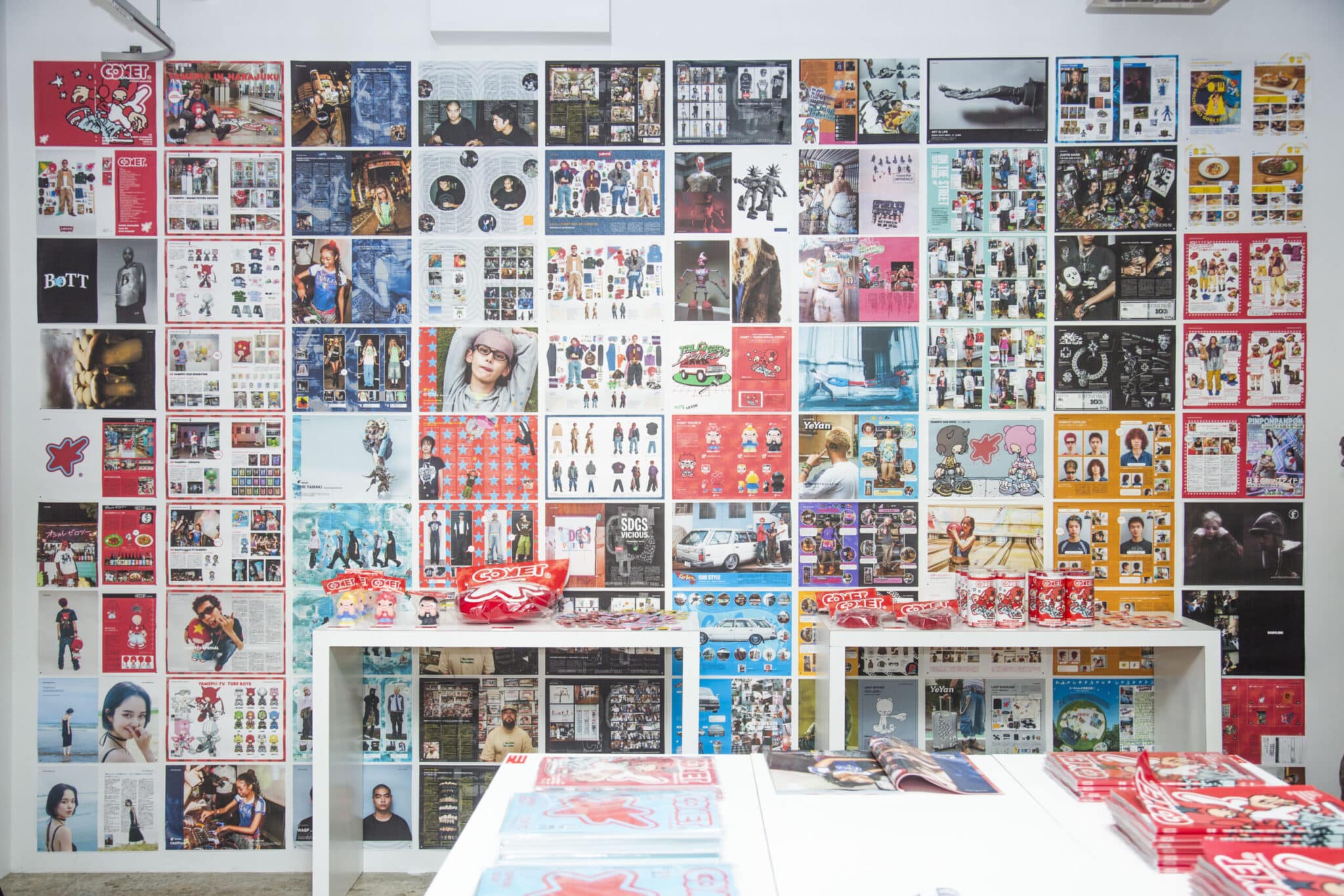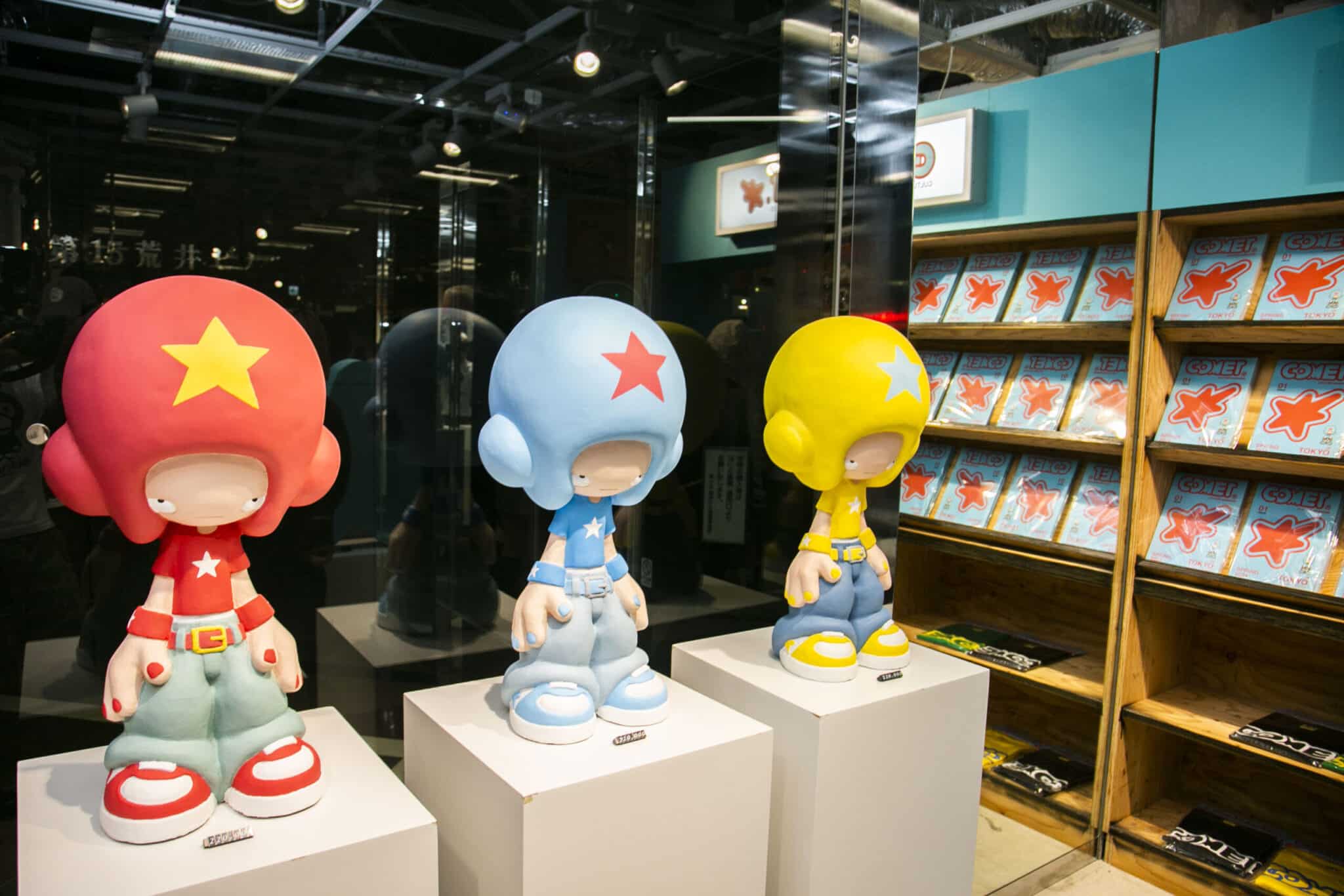CATEGORY
AREA
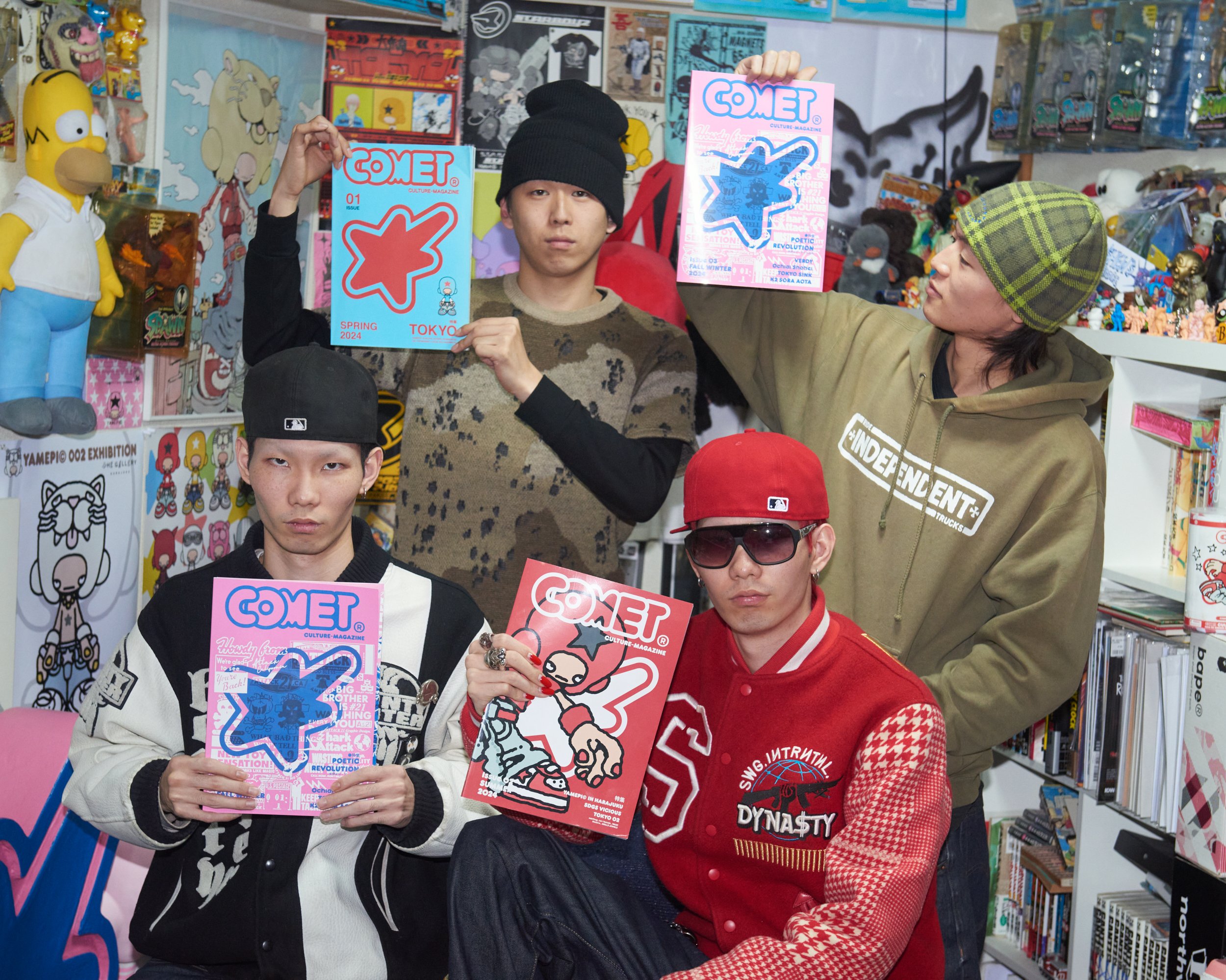
COMET MAGAZINE is a cultural magazine created by COMET, a Tokyo-based creative collective led by the rising artist YAMEPI©. Every member of this group was born after 2000 and is in their early twenties. They handle everything themselves—from editing and design to printing and sales—offering a unique perspective on "Tokyo right now."In this feature, we introduce the vision behind COMET MAGAZINE through the voices of its editorial crew.
The core members of COMET include artist YAMEPI©, his twin brother and creator TAKERU, sculptor and model artist JUJIRO, photographer KOUSEI, and the latest addition, RIN SAITO, who manages media relations and apparel production. So how did they come together to create a magazine?
Please tell us about the origins of COMET.
YAMEPI©.
During the COVID-19 pandemic, with most classes held remotely, we connected through social media, drawn together by our shared creative energy. Even while still in school, we collaborated on various creative projects. Over time, I realized that working as a crew would allow us to produce something even stronger. That’s when I formally invited them to join forces, around October 2023—right after my first solo exhibition (YAMEPI©001, held at Shibuya Studio 4N from October 20–29, 2023).
Can you tell us about each member's role and activities within COMET MAGAZINE?
YAMEPI©.
As an artist, I was holding my first solo exhibition when I met RIN SAITO, who was interning at the company managing the event. Afterward, we started hanging out, and RIN told me, 'I want to start a brand.' I knew starting a brand alone would be tough, so I asked RIN to join COMET.
RIN SAITO
I also work elsewhere, but within COMET, I handle media communications and project coordination. I also support TAKERU, who single-handedly manages most of the editorial work for COMET MAGAZINE, by helping with tasks like transcribing interviews
TAKERU
I work as a graphic designer, handling flyers and package designs. As the editor-in-chief of COMET MAGAZINE, I’m responsible for everything except photography—interviews, writing, layout, and design. I get some design assistance from my senior, Ryo Taniguchi, while all photography is handled by KOUSEI.
YAMEPI©.
I oversee the magazine’s creative direction and share my vision with TAKERU. But to be honest, I leave most of the actual work to him! (laughs)
JUJIRO
My main work is as a sculptor and model artist, so I’m not directly involved in the magazine’s production. However, when COMET works on figures or other 3D projects, I take the lead. I’ve also been practicing 3D printing recently. Since I have connections with many artists, I sometimes help reach out to people for interviews.
What is the meaning behind the name "COMET"?
YAMEPI©.
I’ve always loved stars, so I wanted a name that reflected that. The French word comète has a cute sound and immediately evokes the image of a comet, which felt like a perfect fit. There’s also a French phrase, dessiner des plans sur la comète (which means making unrealistic plans), and I felt it captured our spirit perfectly.
The COMET crew consists of five members: artist YAMEPI© in the middle, TAKERU (back row, right), JUJIRO (back row, left), RIN SAITO (front row, right), and photographer KOUSEI (front row, left).
Why did a group of digital natives choose to create a print magazine?
YAMEPI©.
I’ve always loved magazines, and the idea of creating our own media felt like an exciting challenge
TAKERU
I had no prior experience in editing or magazine layout, but when the idea first came up, I somehow felt confident I could do it. That said, once I started, it turned out to be way harder than I expected! (laughs)
COMET MAGAZINE features many interviews with creators and artists who don’t often appear in mainstream media. What kind of content do you aim to showcase?
YAMEPI©.
We focus on creators and artists from our generation who are based in Tokyo. It’s not just about street culture—we want to introduce the world to young people who are actively shaping Tokyo’s creative scene. That was one of the main reasons we started this magazine.
So, the concept of the magazine is to introduce Tokyo to the world?
TAKERU
Exactly. We’re also planning to release an English edition in the future. With COMET MAGAZINE, we aim to present Tokyo’s creative scene in a way that resonates worldwide
The front page of COMET MAGAZINE. From fashion to interviews to reading pages, the content is wide-ranging and the design is diverse.
The third issue, COMET MAGAZINE ISSUE 03 FALL WINTER, focuses on art. How do you decide on themes for each issue?
YAMEPI©.
TAKERU and I brainstorm the themes together, deciding on the overall direction. Then, as we work on the issue, we add new ideas along the way."
TAKERU
For the first issue, we honestly had no idea what we were doing—we just dove in headfirst. Looking back, some of the layouts are a mess! (laughs). But we achieved our initial goal of featuring interviews with our generation’s creators, so I think it turned out great.
YAMEPI©.
For the third issue, which focuses on art, we got to interview artists we admire. That’s why I’m so eager to see the finished magazine. Creating COMET MAGAZINE is an exciting process, even for us as its makers—it’s a project filled with passion.
When deciding on the subjects of your interviews, is there anything else you look for in addition to the people you like and pay attention to?
YAMEPI©.
We may have our own criteria for what we consider to be a "representative of Tokyo. For the younger generation, it could be someone who has the creativity to compete on the world stage, or someone who is working to become a world-class Tokyo Rep. Many of the people I interviewed from the older generation are now very active on the world stage. Many of them have the same feeling and are very Tokyo-like.
COMET MAGAZINE is dedicated to showcasing Tokyo’s youth culture on a global stage. We believe the culture we create is both cool and globally significant. That belief drives our editorial direction. At the same time, the magazine’s design and layout are deeply influenced by fashion and culture magazines from the '90s and 2000s. So, what shaped the creative backbone of COMET MAGAZINE?
YAMEPI©.
Our absolute favorite is “relax”, which was published in the '90s and 2000s. We were fascinated by the Ura-Harajuku culture of that era and started collecting back issues to learn more. But as we kept reading, we became hooked on the magazine itself. That eventually led us to collect other titles like ”EYESCREAM” as well.
TAKERU
Magazines from that time had incredible layouts. They’ve had a huge influence on COMET MAGAZINE's design..”‘STUDIO VOICE”, for example, had stunning aesthetics. But even if we try to replicate that style, turning it into a real magazine is no easy feat (laughs). Still, that challenge is part of what makes it fun.
Beyond design, did you take inspiration from past magazines when planning feature articles or regular columns?
YAMEPI©.
One thing that stands out in ”relax”is its sheer range of topics—food, martial arts, sports, music... The variety is incredible. That diversity is what makes the magazine so compelling. It also inspired us to adopt the mindset of ‘we can edit anything,’ which we wanted to incorporate into *COMET MAGAZINE*.
TAKERU
I also learned a lot about writing from ”relax”. The tone was never too pretentious; it always felt like it was speaking directly to the reader. When writing for *COMET MAGAZINE*, I keep that in mind—we’re not just telling stories; we’re creating a shared experience with our readers
What does ‘Tokyo-ness’ mean to *COMET*?
YAMEPI©.
Tokyo is a melting pot of cultures, constantly blending and evolving in chaotic ways. I think the people who can take that chaos and make it their own are the ones who truly embody ‘Tokyo-ness.
TAKERU
Exactly. The ability to freely mix and edit different cultural influences defines Tokyo. You can see it in fashion, too. Sometimes, people put together unexpected combinations, yet they look effortlessly cool. That kind of creative intuition and sense of style—that’s what makes Tokyo special.
JUJIRO
I was born in Tokyo, but I’ve always been impressed by the energy of people who come here from other regions to express themselves. Their presence fuels the city’s dynamism, and that itself is part of what makes Tokyo unique.more exciting is a typical Tokyo thing in itself.
RIN SAITO
Tokyo is full of people who stay true to their own style, creating new cultures while remaining independent. That’s the Tokyo I always admired.
Compared to other global cities like New York, Los Angeles, London, Hong Kong, and Seoul, what makes Tokyo unique?
YAMEPI©.
Fashion, no doubt. Tokyo seamlessly blends all kinds of styles, from streetwear to high fashion. The way different fashion cultures coexist in one city is something truly special.”
Each issue of *COMET MAGAZINE* is launched with a pop-up event, which has been consistently well-received. How does the *COMET Crew* feel about the response so far?
YAMEPI©.
We always had this unshakable confidence—‘This will definitely work’—even though we had no real proof. Still, there was some uncertainty. But once we actually put the magazine out there, people picked it up, enjoyed it, and connected with it. That reaffirmed how important ”physical media ”really is.” On social media, memories from 10 years ago don’t just resurface on your feed. But when you document something in print, it stays. In this digital era, recording our time in a physical format feels even more meaningful. Imagine looking back 10 years from now and being able to hold a piece of that history in your hands—that’s something truly valuable.
What themes would you like to feature in future issues of *COMET MAGAZINE*?
YAMEPI©.
We’re planning a special issue focusing on creators born in the 2000s. I’d love to put a crew shot of them on the cover. Looking back at that a decade from now would be really interesting.
As the COMET Crew, what are your future plans?
YAMEPI©.
Right now, the magazine is our main focus, but there are so many things we want to do. The Crew is currently working on a snap magazine inspired by titles like ”TUNE” and” FRUiTS ”set to launch in January 2025. Alongside that, we’re planning an event at CIRCUS TOKYO. We want to establish a cycle where we regularly publish snap magazines and hold events together
TAKERU
We also want to put more energy into our brand
YAMEPI©.
TAKERU and I originally ran a brand called JAM CLUB, and making catalogs for that was what sparked our interest in magazine production. Moving forward, we want to launch a new brand—not just focusing on apparel, but covering lifestyle products as well. Stay tuned for what’s next.
COMET MAGAZINE is a culture magazine that documents the cool activities of Tokyo youth in the 2020s. If you want to understand what’s happening in Tokyo right now, COMET MAGAZINE is a must-read. Currently available only in Japan, but you can order it from the following websites.
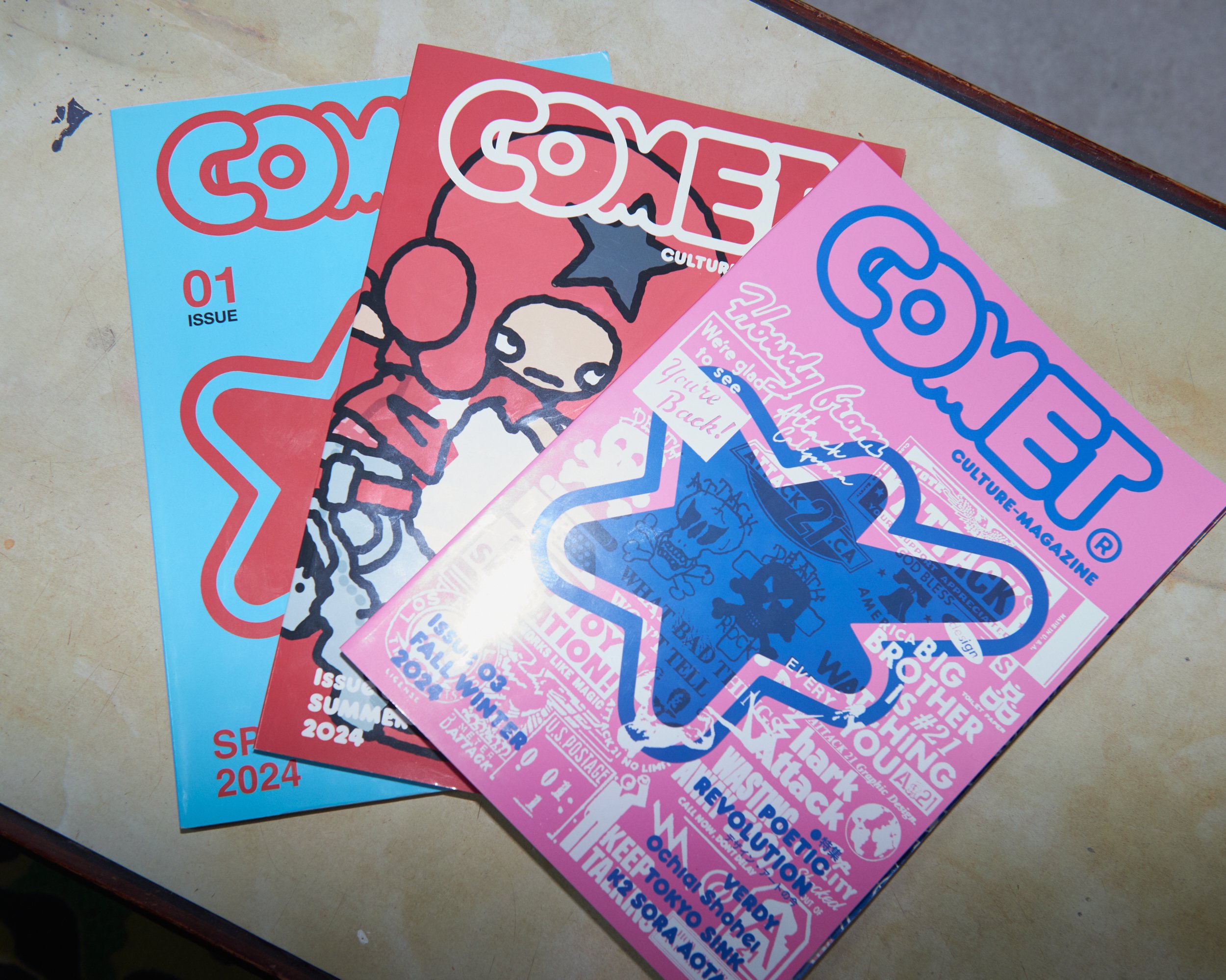
A culture magazine published by COMET, a creative crew composed of members born in 2001. It is published irregularly with a focus on publishing four issues a year. 3 issues are on sale as of December 2024. It is available from BASE, including back numbers.
Online Shop:. https://cometmag.base.shop/
